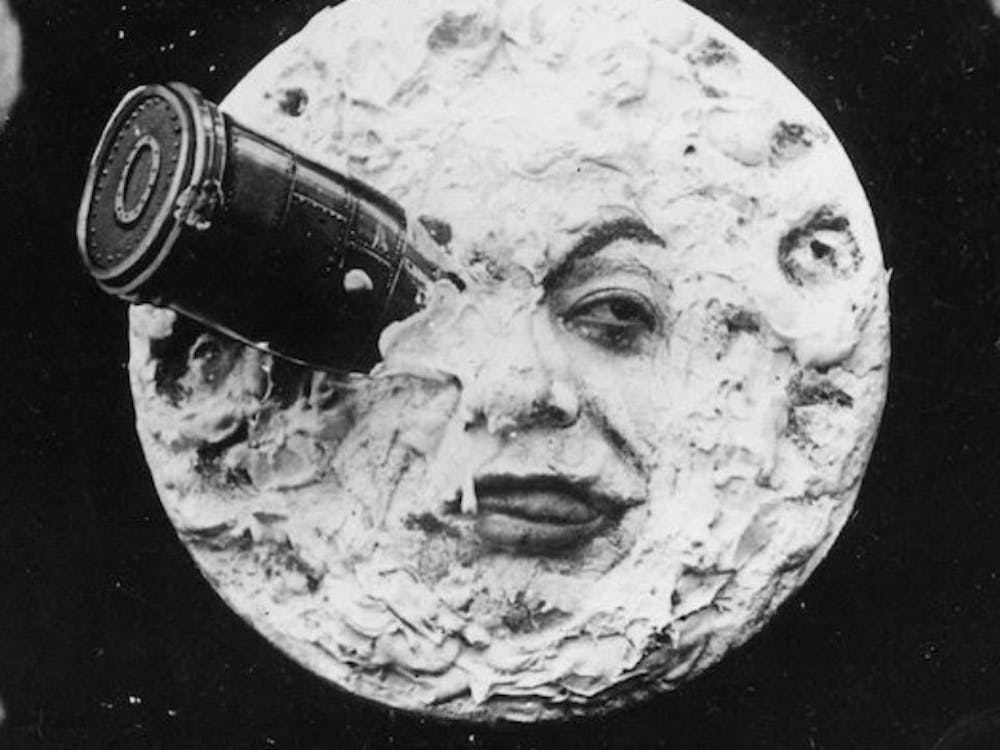In 1902, a rocket landed in the moon’s eye, and audiences were in awe. Pirated versions of George Méliès’ silent black-and-white film “A Trip to the Moon” screened in theaters across the United States to rows of captivated eyes. That year gave birth to a new genre of film — one that would later spawn multi-million dollar budget deals, elaborate theme parks and zeitgeist-defining, imagination-widening stories.
That year, the “space movie” began.
The genre has since rocketed to new heights in Hollywood. Since the space race of the ‘50s and ‘60s, when spaceships and moon-landings became reality, studios started churning out space movies, and they never stopped. Just this year, the tradition has persisted in blockbusters “Star Wars,” “Ad Astra” and “Avengers: Endgame.” As far as the eye can see, the space movie is here to stay.
So what makes a good space movie, then, in a world of so many? While there are certainly several factors, Duke professor and Science Communication program director Jory Weintraub wants us to think about about the science, or lack thereof, behind our favorite films.
For a few years now he’s hosted a biannual event, “Science in the Movies,” that brings together science and film experts in a panel that dissects the science in various movie clips. In the past, the event has covered cinematic depictions of dinosaurs, mental illness and natural disasters. This Thursday, Nov. 21, at 7 p.m. in the North Carolina Museum of Natural Sciences, a panel of three will tackle, for the second time, one of Weintraub’s favorite topics: “Space on the Silver Screen.”
“I just love this topic so much,” Weintraub said. “And especially since this is the year of the 50th anniversary of Apollo 11, I thought, ‘Okay. It’s been long enough — let’s do this one again.’”
The panel will include Tony Rice, a NASA ambassador and WRAL contributor, Dr. Rachel Smith, head of the Astronomy & Astrophysics Research Lab at the NC Museum of Natural Sciences and Dr. Marsha Gordon, professor of film studies at NC State University and co-host of “Movies on the Radio” on WUNC’s “The State of Things.” Weintraub will moderate, presenting clips from space movies through the decades — beginning, of course, with the one that started it all: “A Trip to the Moon.”
A film doesn’t have to be totally scientifically sound to have critical value. Take “A Trip to the Moon,” for example; it was made long before space exploration became a possibility, and it features anthropomorphized planets and insectoid lunar animals. Instead, Gordon appreciates its fantastical take on space travel.
“What I like about [‘A Trip to the Moon’] in the context of thinking about space movies is just sharing with a contemporary audience what a filmmaker dreamed up over 100 years ago as the way you’d imagine getting from earth to the moon and back again,” Gordon wrote in an email. “It’s really quite delightful.”
Another movie that the event panel will discuss is Stanley Kubrick’s 1968 film “2001: A Space Odyssey.” In addition to its dramatic aesthetic power, Dr. Gordon finds the film prescient in its imagination of artificial intelligence.
“‘2001’ raised questions about, for example, what might happen if computers could think and feel,” Gordon wrote. “It also raised the specter of AI taking control in a nefarious way that is a rather serious issue that we will all be confronted with in the relatively near future.”
While many directors would openly admit to taking creative liberties in their depictions of science, a recent bevy of space-themed blockbusters have prided themselves on their scientific accuracy. In the making of “Interstellar,” Christopher Nolan enlisted astrophysicist Kip Thorne, and conversations about the wormhole-filled movie’s scientific authenticity abounded in popular culture. Nolan even followed up the film’s release with a book written by Kip Thorne, “The Science of ‘Interstellar.’”
The general consensus in the scientific community is that “Interstellar” really does take inspiration from sound theoretical astrophysics — although it certainly takes some creative license, as all movies branded as “fiction” necessarily do. But not all films that claim scientific accuracy are so well-researched. Weintraub wants to use these examples — good and bad — as a way of teaching the public what is true about space and space exploration.
“I definitely am an unabashed science geek so I’m not ashamed to say that,” Weintraub said. “But I think a lot of people you almost have to sneak [science] in in the form of entertainment.
Like the universe we live in, the audience of “Space on the Silver Screen” knows no boundaries — it is for science geeks, film freaks and laypeople alike.
Get The Chronicle straight to your inbox
Signup for our weekly newsletter. Cancel at any time.

